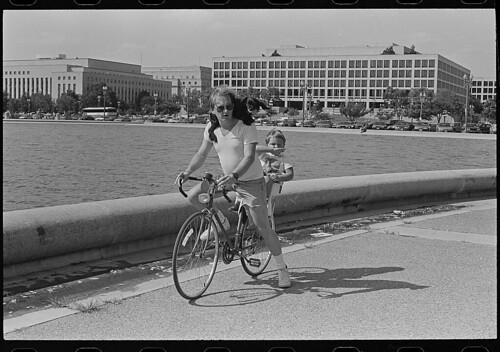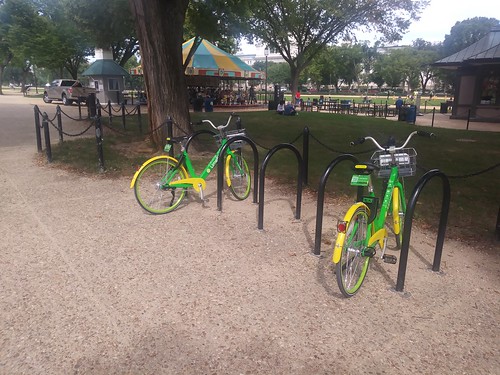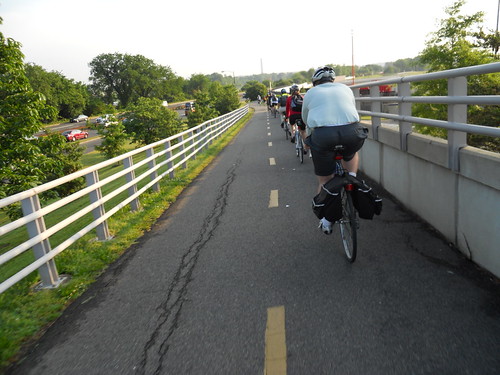
Man and boy riding a bike with a dog perched on the man's shoulder near the U.S. Capitol Reflecting Pool
This photograph from the Library of Congress collection taken in near the Capitol reflecting pool in Washington DC suggests that in the 25 years since 1991 safety in cycling has changed a little bit.
Contributor Names - Patterson, Laura, active approximately 1989-2000, photographer
Created / Published - [Sept. 1991]
Subject Headings
- Reflecting pools--Washington (D.C.)--1990-2000
- Cycling--Washington (D.C.)--1990-2000
- Dogs--Washington (D.C.)--1990-2000
Format Headings - Film negatives--1990-2000.
Notes
- Title devised by Library staff.
- Date from caption information for contact sheet ROLL CALL-1991-507 or corresponding negative sleeve.
- Contact sheet available for reference purposes: ROLL CALL-1991-507, frame 20/20A.
- Contact sheet or negative sleeve caption: "Reflecting pool."
- Forms part of: CQ Roll Call Photograph Collection.
Medium - 1 photograph : negative ; film width 35mm (roll format)
Source Collection - Roll Call portion of CQ Roll Call Photograph Collection (Library of Congress)
Repository - Library of Congress Prints and Photographs Division Washington, D.C. 20540 USA http://hdl.loc.gov/loc.pnp/pp.print
Digital Id - ppmsca 38847 //hdl.loc.gov/loc.pnp/ppmsca.38847
Library of Congress Control Number - 2015646966
Reproduction Number - LC-DIG-ppmsca-38847 (digital file from original item)
Rights Advisory - No known restrictions on publication.
Description - 1 photograph : negative ; film width 35mm (roll format)
LCCN Permalink - https://lccn.loc.gov/2015646966


![Beverly Bayard & Lorline Davis [with bikes] - news photo, 1920](https://farm5.staticflickr.com/4380/36790367686_400398e59c.jpg)